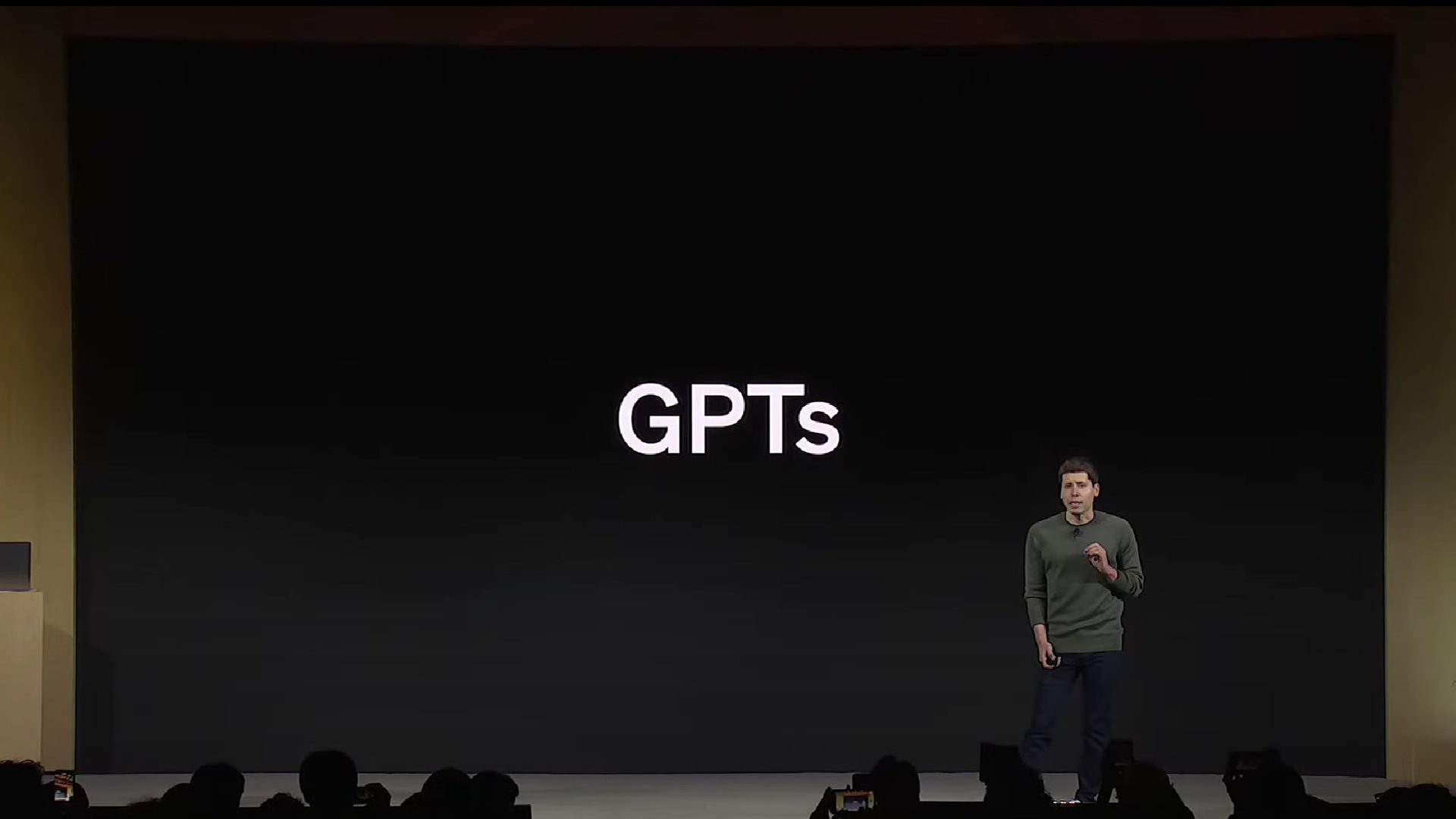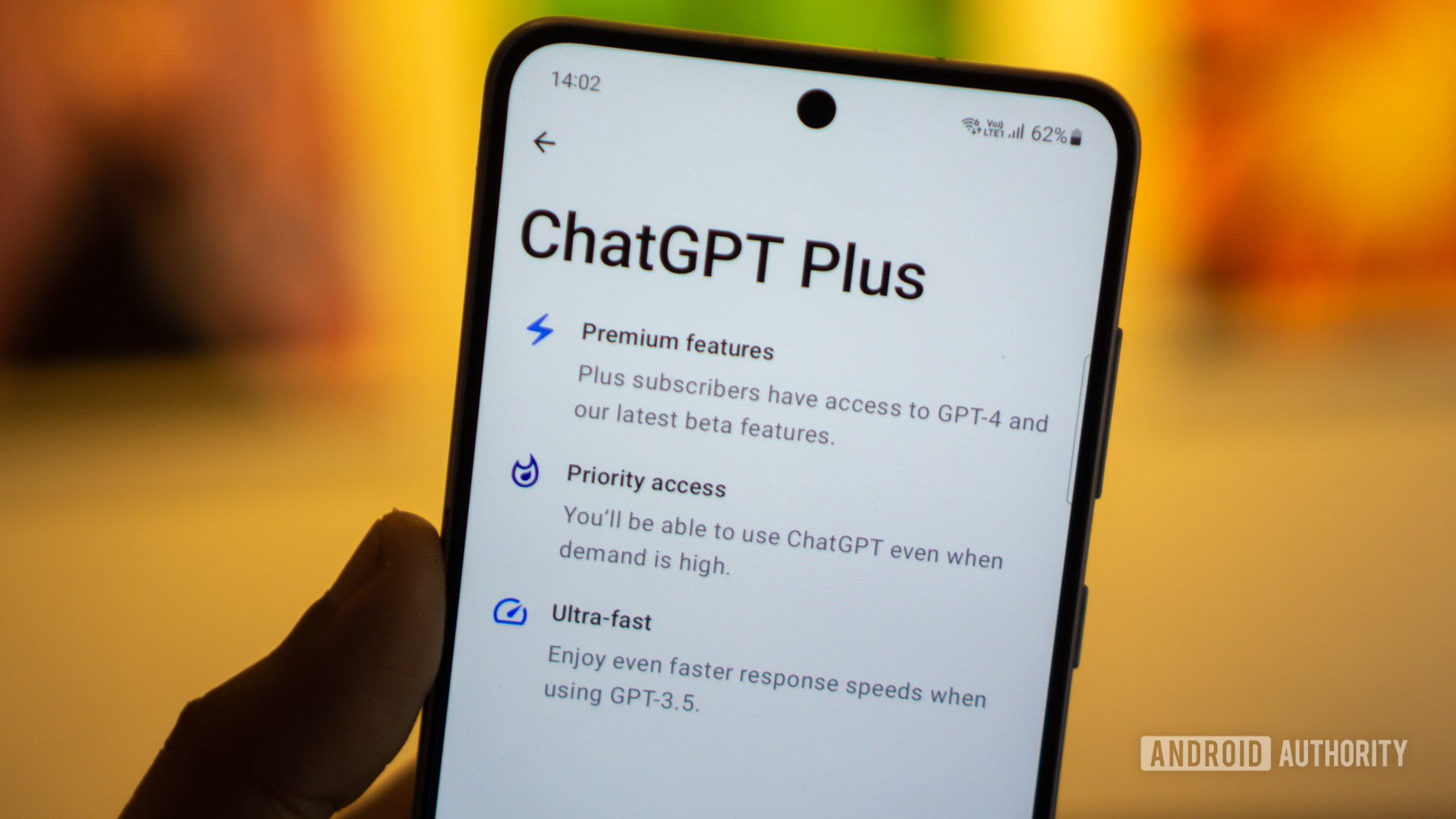Affiliate links on Android Authority may earn us a commission. Learn more.
What are OpenAI GPTs? A customized ChatGPT for every task

For a solid year following ChatGPT’s release in November 2022, the chatbot remained a uniform experience for each and every user. However, that slowly began to change with the release of custom instructions and, more recently, custom GPTs. With custom GPTs, OpenAI says you can teach the chatbot entire workflows, from serving as a board game opponent to acting as a digital coding assistant.
In the short while since the feature’s release, the community at large has already developed GPTs that can customize your resume for different jobs, create custom logos, and even send emails or text messages from within ChatGPT.
Given the feature’s incredible potential then, let’s take a closer look at custom GPTs, what they can do, and how to get started using them.
What are custom GPTs? How do they work?

First off, GPT stands for Generative Pretrained Transformer and it refers to the underlying language model powering ChatGPT. A custom GPT, however, doesn’t mean building your own chatbot or language model from scratch. Instead, think of it as a customized version of the chatbot that you can train to complete a specific task.
While creating a custom GPT, you can add text-based instructions and attach files to expand the chatbot’s knowledge base. Beyond that, you can also enable features like web browsing, AI image generation via DALL-E, and the relatively new Data Analysis feature. In other words, you can make your custom GPT as simple or complex as needed.
GPTs are a fine-tuned version of ChatGPT, with custom knowledge bases and pre-set instructions.
At the simpler end of the spectrum, you could create a custom GPT that has your resume and cover letter in its knowledge base along with custom instructions to tailor them according to the job descriptions you provide. You can even ask it to provide a downloadable document link at the end. While you could always ask ChatGPT to write your resume, using a custom GPT means that you don’t have to specify the writing style or provide instructions every time you begin.
If you’re comfortable with reading a bit of documentation and editing bits of code, you can also connect custom GPTs to external services via third-party APIs. Imagine a custom GPT that can connect to your Gmail and Google Calendar account to plan and schedule your day. Or a GPT that can fetch live trading data and publish its analysis directly to your Twitter/X feed. The possibilities are endless.
To summarize, custom GPTs allow the chatbot to directly perform tasks as needed. If you don’t want to provide your own instructions, OpenAI has also created the GPT store where you can discover and use publicly shared GPTs for free.
Who can create custom GPTs?

Anyone can create a custom GPT, with the only requirement being that you’ll need a ChatGPT Plus subscription. The subscription grants you access to several other features like web browsing, advanced data analysis, and the GPT-4o language model. Virtually all ChatGPT Plus features are available when setting up a custom GPT.
That said, free users can now use GPTs created by other users in a limited capacity. You see, the release of GPT-4o marked the first time that OpenAI opened access to premium features like web browsing and data analysis. However, the caveat is that you can only send a limited number of messages per hour on the free tier.
You can use custom GPTs even if you don't pay for ChatGPT, at least to some extent.
Separate limits apply for GPT-4o and custom GPTs, but they typically reset after a few hours so you can resume at a later time. Keep in mind that image generation via DALL-E isn’t available on the free tier, so any custom GPTs relying on it won’t work unless you upgrade.
Custom GPTs can be private or shared with the world at large. Public GPT authors won’t see the contents of a chat, so you don’t have to worry about data leaks. Even better, OpenAI has built a GPT store where you can browse others’ creations across categories like productivity and entertainment. Makers of popular GPTs will even get paid for their work, depending on the number of users.
How to create custom GPTs
Creating a custom GPT doesn’t take more than a few minutes. OpenAI has also built a GPT Builder chatbot that asks questions and fills in all of the fields for you. It makes the whole process as easy as chatting with ChatGPT. Here’s a quick overview of the process:
- Log into ChatGPT with your OpenAI account and ensure you have a valid Plus subscription.
- In the left sidebar, click on the Explore button and select “Create a GPT”. This will bring you to the GPT Builder screen where you can either use a chatbot to guide you through the process or type everything in manually.
- To keep things simple, we’ll stick to the chatbot interface. Simply enter your desired actions in plain English. For example, you can say “create a GPT that customizes my resume and cover letter based on the provided job description.”
- At this point, the bot may prompt you to enter a name and description for your custom GPT. You can respond to the questions or head over to the “Configure” tab and fill these fields.
- In the Configure tab, scroll down to the section titled Knowledge and upload your resume and cover letter. Your custom GPT will reference these files in the future. You can also optionally enable other capabilities like image generation and web browsing, but we won’t need it for this GPT.
- Once you’re happy with customizing the GPT, click on the green Save button located near the top-right of your screen. At this point, you can choose whether you want to publish the custom GPT or keep it private.
That’s it — creating a custom GPT takes very little time but unlocks a world of potential. You’ll still face some limitations like ChatGPT’s character limit but it’s still undeniably one of the platform’s biggest upgrades since release.